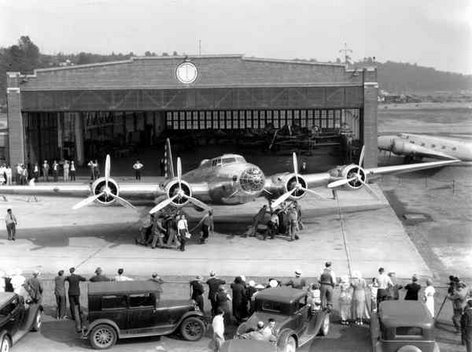
Second Lieutenant Ruth Mable Gardiner, Nurse Corps, United States Army, was born in Calgary, Alberta, Dominion of Canada, 20 May 1914. She and several family members attempted to emigrate to the United States of America. They arrived at Eastport, Idaho, on 15 March 1917, but were debarred and ordered excluded. An application for entry on bond was approved and Ruth was allowed into the United States at Noyes, Minnesota, 11 July 1917. Just 3 years, 8 months old, Ruth was unaccompanied. Her nearest relatives were listed as an uncle, Hilliard Gardiner, in Sutherland, Saskatchewan, and another uncle, John Flaherty, in Oakland, California. Ruth was described as being of Irish ancestry, with a fair complexion, blond hair and blue eyes. Her passage to America had been paid by an employee of the Calgary Street Railway Company.
Miss Gardiner lived Indianapolis, Indiana, with an older sister, Constance, a stenographer, and her husband, Clarence Smith, a salesman. She attended Sacred Heart High School in Indianapolis. After graduating, Miss Gardiner entered the Training School for Nurses at the White Haven Sanitorium, White Haven, Pennsylvania. She graduated in 1934.
Miss Gardiner later worked at St. Agnes Hospital, White Plains, New York; St. Elizabeth Hospital, Utica, New York; and the Indiana University Medical Center, at Indianapolis.

In January 1942, Miss Gardiner joined the United States Army. She was a member of the first training class for air evacuation nurses at the 349th Air Evacuation Group, Bowman Field, Kentucky,. The class of 30 graduated 18 February 1943. Lieutenant Gardiner was then assigned to the 805th Medical Air Evacuation Squadron, where she was one of only six Army nurses involved in the air evacuation of wounded soldiers from the Aleutian Islands.
On 27 July 1943, Lieutenant Gardiner was aboard a Douglas C-47 Skytrain flown by Lieutenant Carl T. Moore and his crew. They were making an instrument approach to Naknek Army Air Base:
On 27 July 1943, Ship No. 41-38643 failed to clear the top of a ridge on the approach leg, coming in to Naknek in soupy weather.
—U.S. Army, “History of the 54th Troop Carrier Squadron” (1945). World War Regimental Histories. Book 22, at Page 17, Column 2
The C-47 was destroyed and all 11 persons on board were killed.
Second Lieutenant Ruth M. Gardiner, Nurse Corps, United States Army, was the first American nurse to die in the line of duty during World War II.
From the day of her enrollment in the Training School for Nurses she exhibited an earnest desire to serve humanity. She was devoted, understanding and efficient in the care of the sick. She was highly regarded by her classmates and the staff. Her aptitudes and personality were further shown during her career in the Army Nurse’s Corps. On 27 July, 1943, she gave her life in the service of her country.
—TIMES-LEADER The Evening News, Wilkes-Barre, Pennsylvania, Wednesday 15 December 1948, at Page 2, Column 2
Lieutenant Gardiner’s remains were buried at the Fort Richardson Post Cemetery, Anchorage, Alaska. They were re-interred at the Arlington National Cemetery, Arlington, Virginia, 28 October 1948.
The 12-story Chicago Beach Hotel at 1660 E. Hyde Park Boulevard, Chicago, Illinois, was taken over by the U.S. Army and converted to a 1,061-bed hospital. Opening for patients 1 October 1943, the military hospital was named Gardiner General Hospital, in honor of Lieutenant Gardiner.

Gardiner General Hospital discharged its last patient 21 June 1946, and the building was reassigned as Headquarters, Fifth Army.
In 1948, the nurses quarters at White Haven Sanitorium, formerly known as “the lodge,” were named the Ruth M. Gardiner Pavilion. In 1963, the nurses quarters at Fort Wainwright, Alaska, were named Gardiner Hall.
In 1943, the Women’s International Bowling Congress’ Wings of Mercy Fund donated a Douglas C-47 Skytrain air ambulance to the Army Air Forces in memory of Ruth M. Gardiner.
The Flight Nurse’s Creed
I will summon every resource to prevent the triumph of death over life.
I will stand guard over the medicines and equipment entrusted to my care and ensure their proper use.
I will be untiring in the performances of my duties and I will remember that, upon my disposition and spirit, will in large measure depend the morale of my patients.
I will be faithful to my training and to the wisdom handed down to me by those who have gone before me.
I have taken a nurse’s oath, reverent in man’s mind because of the spirit and work of its creator, Florence Nightingale. She, I remember, was called the “Lady with the Lamp.”
It is now my privilege to lift this lamp of hope and faith and courage in my profession to heights not known by her in her time. Together with the help of flight surgeons and surgical technicians, I can set the very skies ablaze with life and promise for the sick, injured, and wounded who are my sacred charges.
. . . This I will do. I will not falter in war or in peace.

The airplane in which Lieutenant Gardiner and the others were killed was a Douglas C-47-DL Skytrain, U.S.A.A.F. serial number 41-38643 (c/n 4746). It was built at the Douglas Aircraft Company plant in Long Beach, California, and delivered to the U.S. Army Air Forces on 27 September 1942. The Skytrain was assigned to 54th Troop Carrier Squadron, Eleventh Air Force, in Alaska, 29 March 1943.
© 2018, Bryan R. Swopes

































